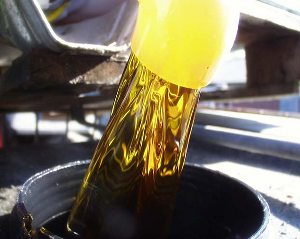This past week the presidential hopefuls for 2016 attended the Iowa Ag Summit, which for all practical purposes served as a test run for the Iowa caucus hopefuls. Of particular concern for all the candidates was how they were going to position themselves with respect to the RFS program. Iowa is big on corn. Corn means ethanol, and that means jobs for Iowans.
The EPA’s Renewable Fuel Standard (RFS) is a controversial program where the government has mandated that all petroleum motor fuels must have a certain amount of renewable fuel added to them in order to reduce harmful combustion emissions (so as to reduce greenhouse gases). This is why you see the “This product contains up to 10% Ethanol” at the gas pump.
The government is essentially forcing the private industry (Oil and Gas) to purchase a product that under certain circumstances it would not purchase. Ethanol by far makes up the bulk of the sales under the RFS program. The program has increased the volume of renewable fuel required to be blended into transportation fuel from 9 billion gallons in 2008 to 36 billion gallons by 2022. Most of this will be ethanol.
From the US EPA’s RFS site, here is the 2014 data, showing the number of RINs (Rewewable Identification Number) generated by each fuel class industry. Biodiesel, the stuff we make at TBI, is listed under D4. Ethanol would be under D3 and D6.
| Fuel (D Code) | Domestic | Importer | Foreign Generation |
|---|---|---|---|
| Cellulosic Biofuel (D3) | 33,360,560 | 0 | 0 |
| Biomass-Based Diesel (D4) | 2,212,736,209 | 203,958,762 | 291,970,178 |
| Advanced Biofuel (D5) | 78,838,620 | 64,474,655 | 0 |
| Renewable Fuel (D6) | 14,009,755,793 | 79,009,021 | 257,366,277 |
| Cellulosic Diesel (D7) | 8,859 | 50,446 | 0 |
Biodiesel has long been the red-headed stepchild that just “tags along” under Ethanol in the RFS program. Indeed, when the RFS program was first implemented, it was confusing for biodiesel producers to even comply with it because the program was so blatantly skewed towards ethanol. But as you can see, Ethanol produced roughly 14 Billion RINs for 2014, with biodiesel trailing with a paltry 2.2 Billion domestically produced RINs. Thus, naturally, the biodiesel faction really doesn’t have much influence into the RFS program, and we just go along with whatever big Ethanol can lobby and push to put in place.
The main issue I have as a biodiesel producer is I don’t think biodiesel needs the RFS. As far as I can tell, it has not helped my industry. In fact, in the past some unsavory types have fraudulently fabricated RFS data that put a black eye on my industry. Instead we have layer upon layer of regulation, which encumbers business operations for small companies, and puts us at the mercy of political jockeying like we have seen in 2014 and 2015.
The EPA STILL hasn’t released the mandate requirements for RFS for 2014 and 2015. This is supposed to be done in June of the year prior to the mandate year, meaning in 3 months, we should be receiving the mandate requirements for the 2016 production year. This hasn’t happened, and it has created uncertainty and trepidity in our market. That means depressed prices, depressed orders, and depressed revenues for producers.
The ethanol producers are big names you know well. They have deep pockets, and can afford very powerful lobbyists and PACs in Washington DC to further their interests. There are roughly 160 biodiesel plants in the US, most of which are 10 Million Gallons per Year (MGY) production, or less.
The shame of all of this is that biodiesel is a great renewable fuel. It’s a drop in replacement for diesel, could be a stand alone fuel all by itself if the market were allowed to grow naturally. (Ethanol is never sold “neat”, because of BATF regulations around ethanol and it’s low temperature ignition problems. It is always blended with gasoline in some ratio.)
Further, there is no “Blend Wall” with biodiesel, you can blend it as high as you like as long as your engine is rated for it. We regularly burn straight biodiesel in our cars and trucks without incident.
Biodiesel is here now. No engine modifications needed, no refueling infrastructure changes needed, and by far, comparably less concerns or restrictions on usability or compatibility with modern vehicles on or off the road today. The customers that use our fuel love it, and like the fact that we are recycling used cooking oil into a renewable fuel that is domestically produced here in the USA. That, by itself, should be enough for biodiesel to stand on its own.
It may be wishful thinking, and maybe even a little naive, but I’d like to see biodiesel de-coupled from ethanol. Ethanol is giving us a bad name (I still have people ask me if we make biodiesel out of corn…), and we really need to be out in front of this problem and explaining the benefits of biodiesel instead of relying on Ethanol and the EPA to sort out our problems for us.

